7 Types of Plants With Holes In Leaves – Fabulous Fenestrated Varieties For Your Home
Plants with holes in the leaves are called fenestrated plants. Here are 7 you can grow for a beautiful addition to your houseplant collection.
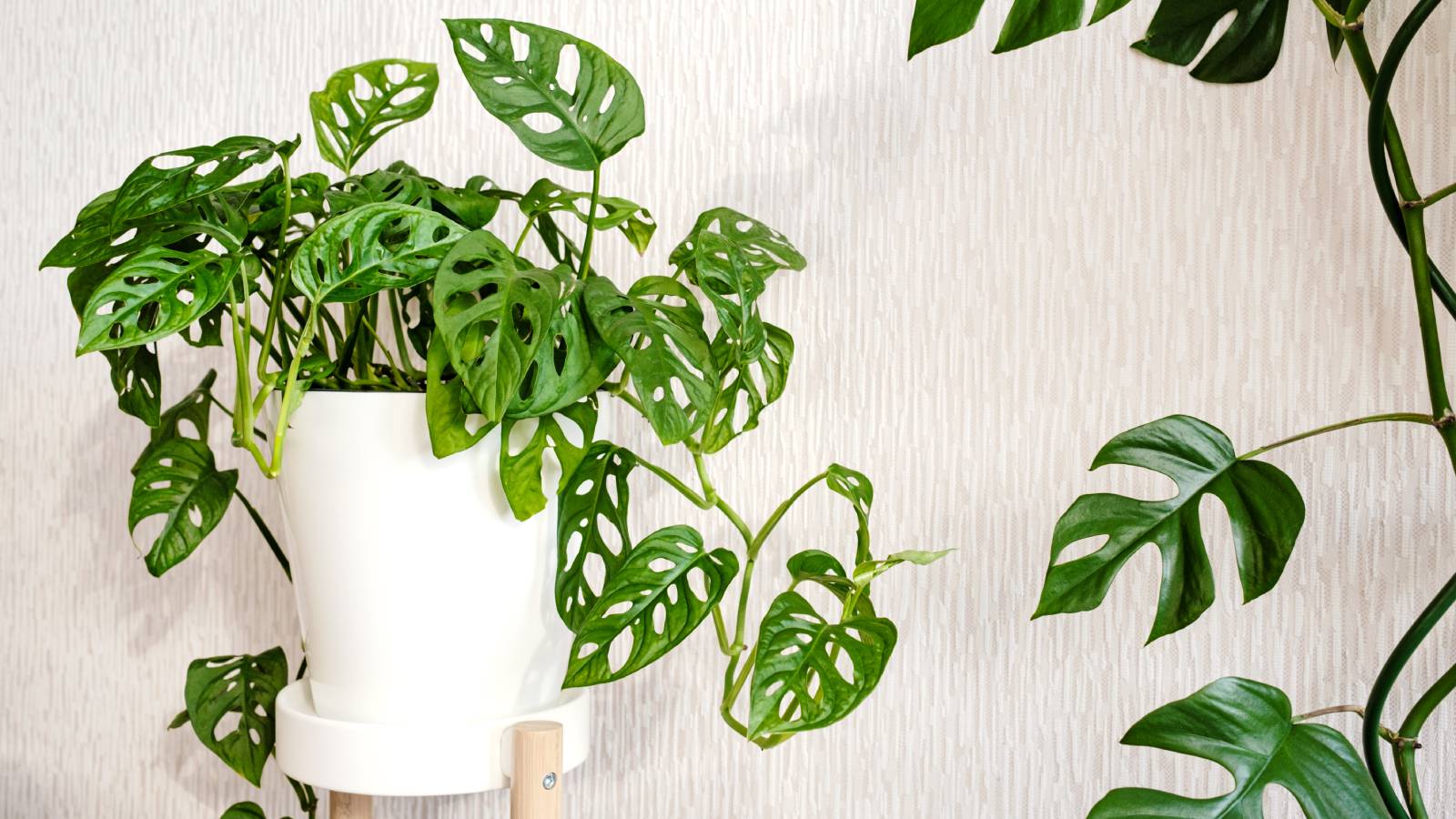

Kathleen Walters
You know the saying “Everything old is new again?” Well, it couldn't be a truer adage when it comes to plants with holes in their leaves. Back in the ‘70s, I remember my mom growing a giant Monstera in our living room; back then we called them split leaf philodendrons. As my gardening knowledge increased in my adult life, I realized those are two totally different plants! Fast forward to now and unique, hard-to-find houseplants with holey leaves are trending hard.
Today, Monstera plants can be easily and affordably sourced, but they aren't the only plants with holes in leaves that can add zip and interest to your decor. A fenestration is a window or an opening, hence biologically holey plants are called fenestrated plants. What are some other plants with a fenestrated leaf? Keep reading to learn about my top 7 curiously-holed houseplants.
Pretty Plants With Holes in Their Leaves
1. Monstera adansonii or Swiss Cheese Vine
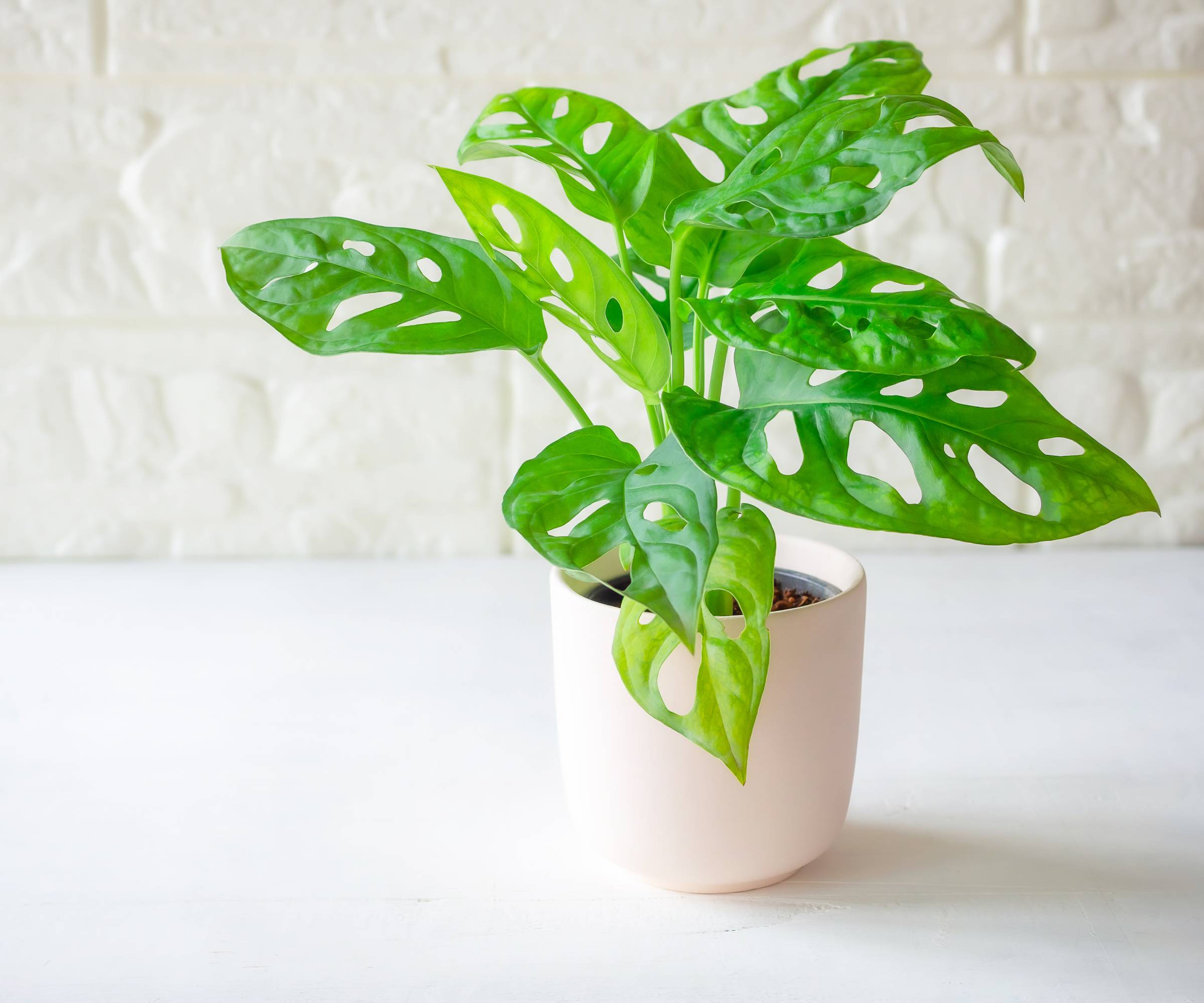
A smaller variety of Monstera is Monstera adansonii or Swiss cheese vine. Not to be confused with M. obliqua, this beautiful vine also has perforated leaves and can grow up to 10-15 feet when grown inside. The good news is that you can limit the size of this Monstera by pruning it back and it will happily continue to grow with no ill effects.
Grow as a hanging plant, in a pot, or on a trellis. Keep M. adansonii in bright, indirect light, water the plant when the soil is dry to the touch, and keep it away from cold drafts or heating vents. Plant in a well-draining, fertile potting mix. This Swiss cheese vine should be lightly fertilized in the spring and summer.
2. Alocasia 'Jacklyn'
Alocasia 'Jacklyn' (Alocasia tandurusa) is another standout plant with stunning deeply lobed, fuzzy leaves accented with dark green veins. Resembling deer antlers, 'Jacklyn', a relative of the elephant ear plant, is nowhere near as large as its cousin, standing at a diminutive 4 inches (10 cm) tall and just as wide when grown as a houseplant. Provide Alocasia 'Jacklyn' with bright indirect light, well-draining soil, and a stake for it to clamber up. Note: This plant is not pet-safe.
3. Tree Philodendron
While I've batted the names philodendron and monstera around as relatives, the fact is they are not the same. While both are part of the Araceae family, philodendrons have splits or lobes rather than the holes found in Monstera leaves.
The tree philodendron (Philodendron bipinnatifidum) is a monster in the sense that this plant can get up to 10 feet (3 m) in height when grown as a houseplant; too big for many homes. Its deeply lobed, large glossy leaves are the attraction. It can often be seen in the atriums of commercial buildings. Provide this philodendron with bright light, moist but well-draining soil rich in organic matter, and moderate humidity.
Sign up for the Gardening Know How newsletter today and receive a free copy of our e-book "How to Grow Delicious Tomatoes".
4. Philodendron Xanadu
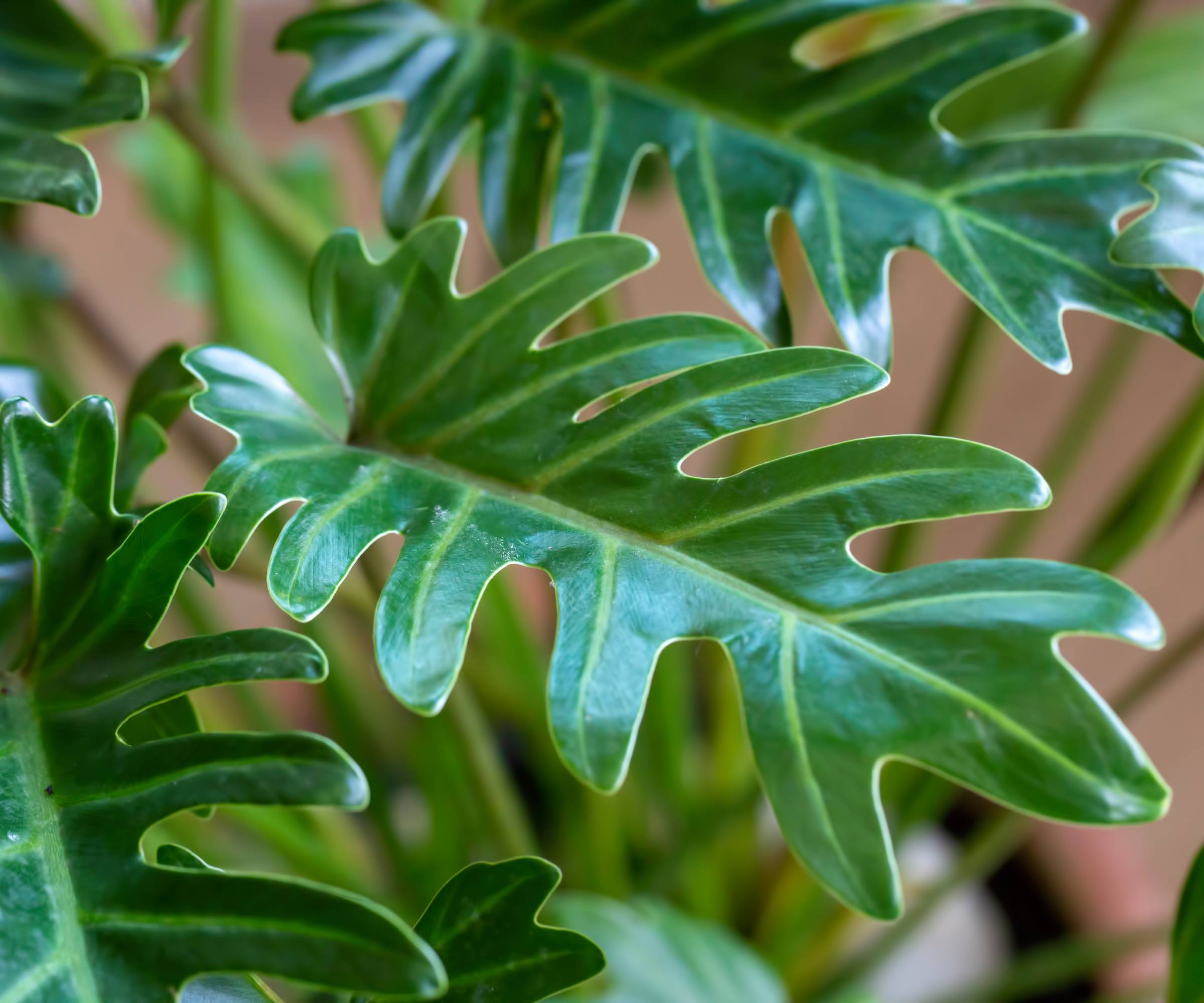
Philodendron xanadu (Thaumatophyllum xanadu) is another excellent choice. Until recently, this plant was classified as a philodendron, but was reclassified in 2018 and kept its philodendron common name. Philodendron xanadu has foot-long, deeply lobed, glossy green leaves on long petioles. It is an evergreen and can be planted outside in USDA zones 9-11 where it will likely reward you with a dark red spathe accented with a creamy white spadix, its “flower."
A low-maintenance plant, philodendron xanadu prefers bright indirect light and moist fertile, well-draining soil. It has a dense, mounding yet spreading habit and can grow to about 3-5 feet (1-1.5 m) in height and 5 feet (1.5 m) across. Note: This plant is not pet-safe.
5. Mini Monstera
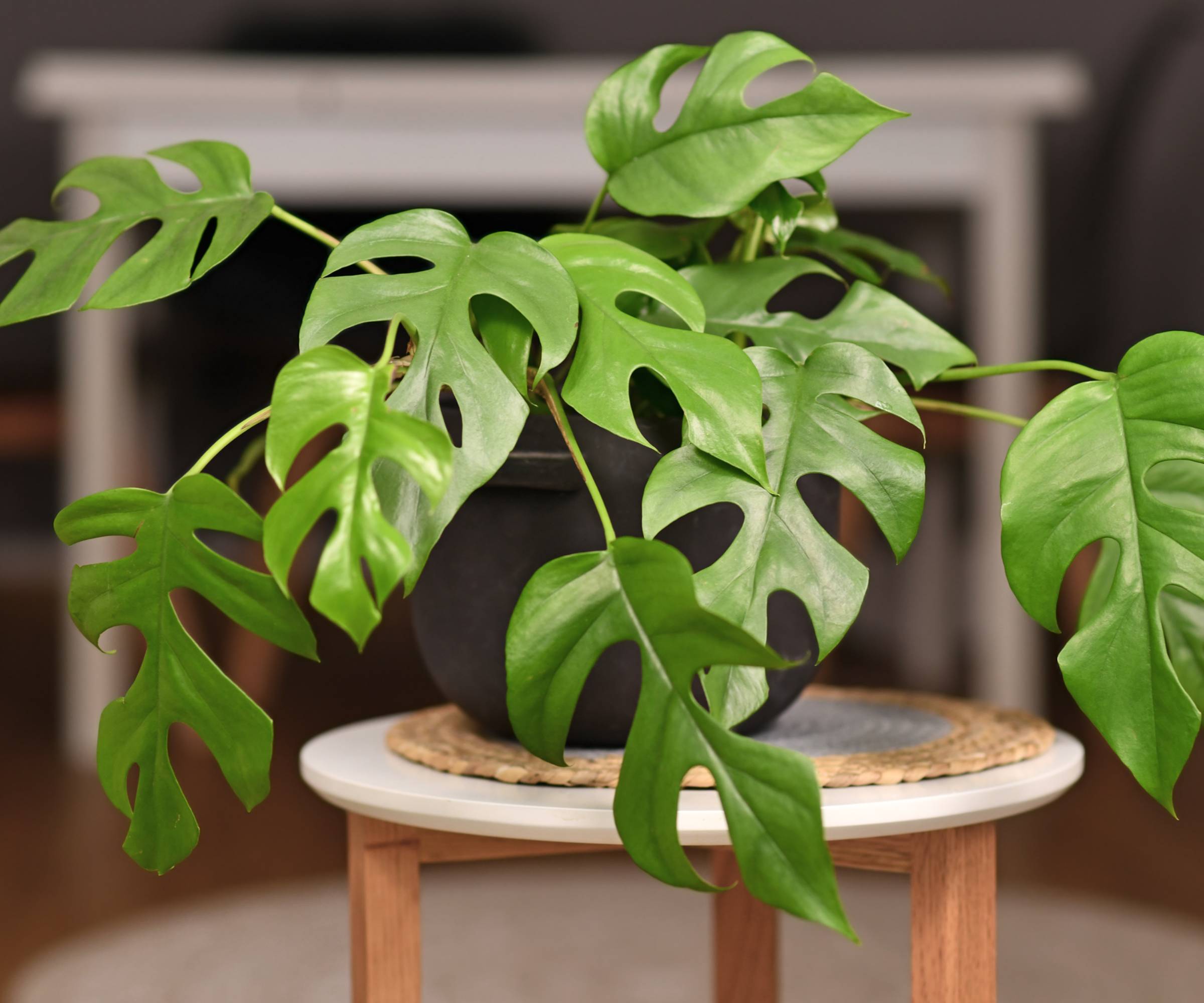
So we've ascertained that Monstera is, well, a monster in terms of size, but if you lack the room, try growing a mini monstera. Although looking much like a Monstera, it is actually not a Monstera at all, but rather a relative called Rhaphidophora tetrasperma.
With a similar glossy green, fenestrated leaf, mini monsteras give you that tropical feel of a clambering vine without the monstrous size of a its bigger relative. Native to Thailand and Malaysia, container-grown plants can be expected to grow to about 3- feet (1-2 m) in height.
They prefer partial sun and high humidity; an east or west-facing window in a bathroom or kitchen would be ideal. Grow the mini monstera up a moss pole or in a hanging basket. Use a well-draining potting mix rich in organic material and the soil damp but not sodden.
6. Monstera obliqua
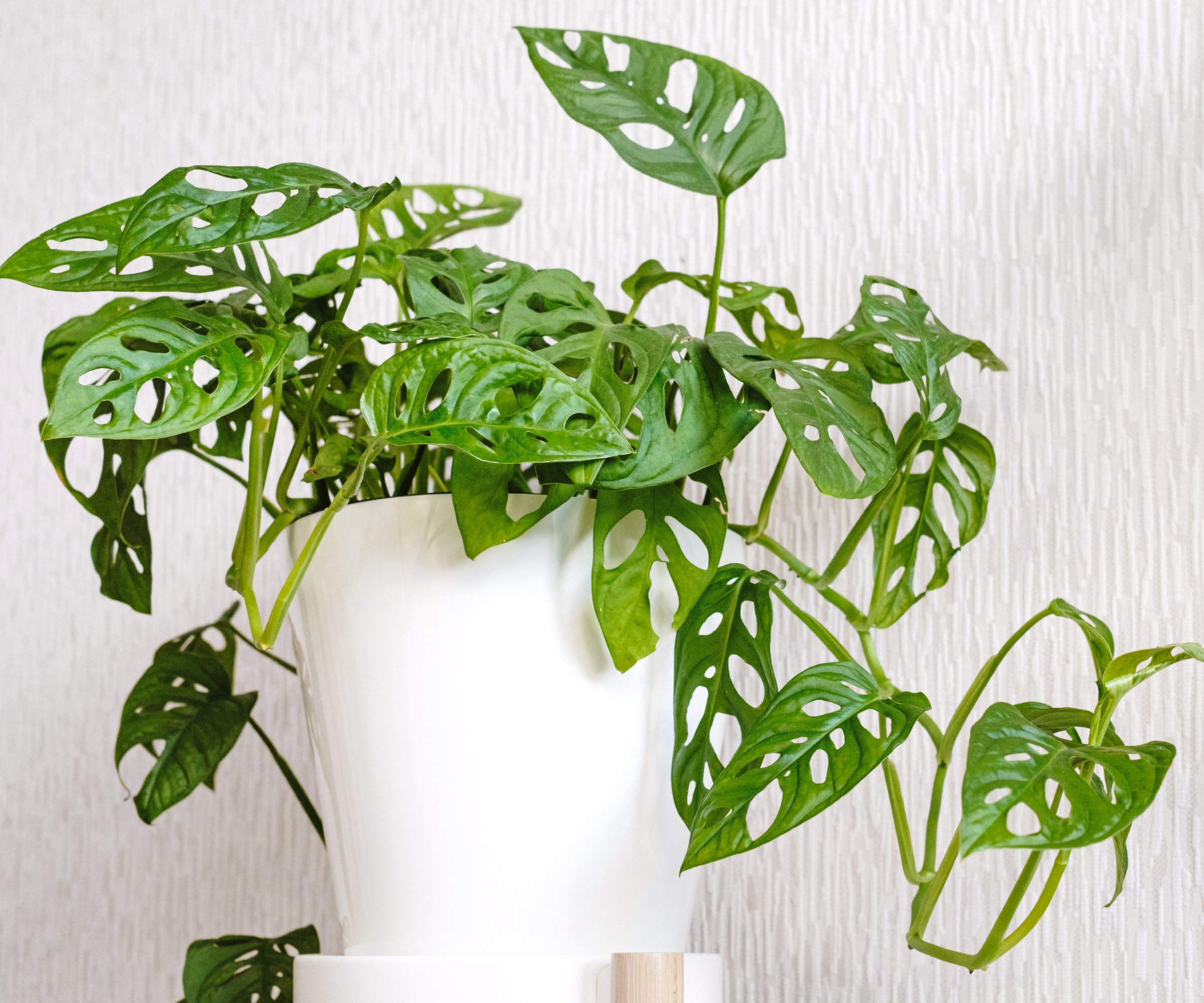
Another smaller Monstera, Monstera obliqua, deserves some accolades as well. M. obliqua became insanely popular recently, with prices going through the roof for a specimen. Less easy-going than its sibling M. deliciosa, this extremely holey-leaved plant thrives in medium, indirect light, well-draining soil, and high humidity.
This vine can grow from 1-10 feet (30 cm to 3 m) in height and 1-4 feet (30-122 cm) across. It is a challenging but rewarding plant to grow and propagate.
Note: Keep your pets away from all Monstera plants, as they are toxic.
If you can find it, look for M. obliqua 'Peru', a lovely variation with delicate, irregular fenestrations.
7. Baltic Blue Pothos
Pothos is a hardy, common houseplant but the 'Baltic Blue' variation is a rarity. 'Baltic Blue' pothos (Epipremnum pinnatum) has blue-green foliage that fenestrate as the plant matures. A perennial vine, its mature size is 10-12 feet when grown in containers.
Native to Asia and Australia, these pothos should be grown in a light, well-draining, fertile potting mix. Place the plant in bright indirect light, water only when the soil is dry to the touch, and keep away from any swings in temperature like cold drafts or heating vents.
Sufficient light is the key to fenestration with the 'Baltic Blue' pothos. Move the plant to an area with more light if the foliage is not splitting. Note: Pothos are also considered to be toxic.
Final Thoughts
Plants that fenestrate are uncommon. There are several possibilities as to why they grow in this manner. It might be to allow airflow to cool the plant or to capture light better. It may even be a form of camouflage. Whatever the reason, these holey plants are coveted by plant parents everywhere for their unique appearance.
This article features products available from third-party vendors in the Gardening Know How Shop.

Amy Grant has been gardening for 30 years and writing for 15. A professional chef and caterer, Amy's area of expertise is culinary gardening.
- Kathleen WaltersContent Editor